Thor's hammer part of Viking finds returning to Thetford
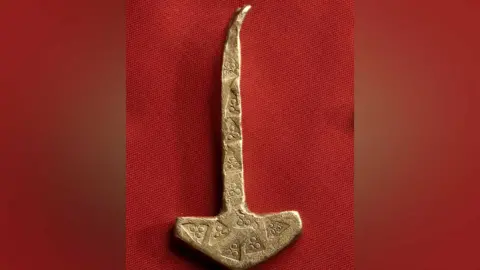 Norfolk Museums Service
Norfolk Museums ServiceA Thor's hammer and a pottery lamp are among Viking Great Army finds returning to the town where they were discovered.
Thousands of Scandinavians formed an army in England to raid and conquer between AD865-878, and Thetford in Norfolk was one of their winter camps.
The story of how this led to the town becoming a major Viking settlement will be told at its Ancient House Museum.
Curator Oliver Bone said the exhibits "show how important this area was in the Viking story".
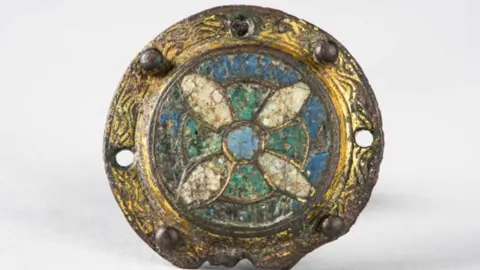 Norfolk Museums Service
Norfolk Museums Service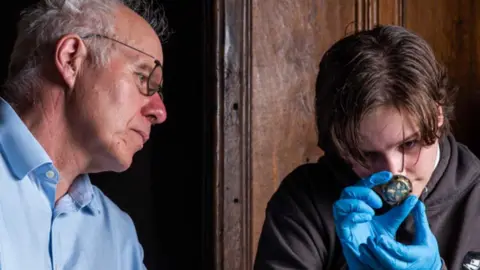 Norfolk Museums Service
Norfolk Museums ServiceThe Anglo-Saxon Chronicle recounted how the Great Army raided, conquered and wintered in England, until it was defeated by Alfred the Great at Edington in AD878.
Exhibits on display include a tiny (4cm or 1.5in) Thor's hammer, found at South Lopham.
Mr Bone said: "It's a little pendant that would have been worn around the neck that probably had a protective function - if you were part of the Viking Great Army you probably wanted the god Thor on your side."
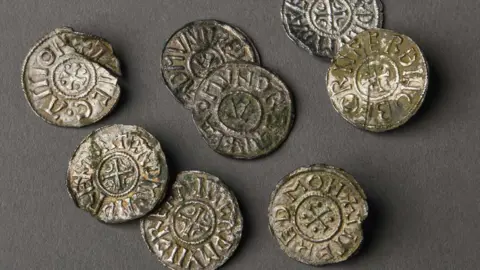 Norfolk Museums Service
Norfolk Museums ServiceA "rare hoard" of King Edmund pennies will also be included, which was either hidden by Anglo-Saxons as the Vikings approached or loot lost by the raiders.
Mr Bone said: "When the Vikings came to East Anglia in AD865, the East Anglians made peace with them and gave them horses.
"But when they returned to overwinter at Thetford in AD869, they fought and killed King Edmund."
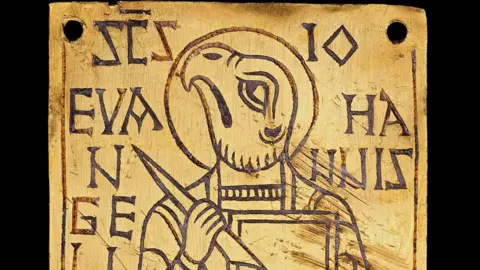 Trustees of the British Museum
Trustees of the British Museum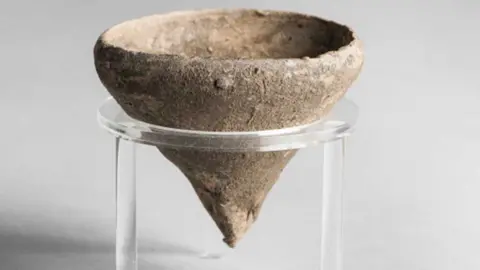 Norfolk Museums Service
Norfolk Museums Service He was canonised shortly afterwards and his body laid to rest at Bury St Edmunds in Suffolk.
"The interesting thing for our area is the development of the memorial coinage to St Edmund, within 10 to 15 years after and it seems to be part of the Christianisation of Viking settlers," Mr Bone said.
"The melding of the Scandinavian and Anglo-Saxon cultures is the stimulus for Thetford's development into a trading and craft-making centre, particularly into the next century."
Other finds on display include a Viking sword and brooches found just outside Thetford (on loan from the British Museum) and a Viking-raid era gold plaque of St John the Evangelist discovered at Brandon.
The exhibition, called The Vikings, history on your doorstep, opens on Saturday, 16 July.
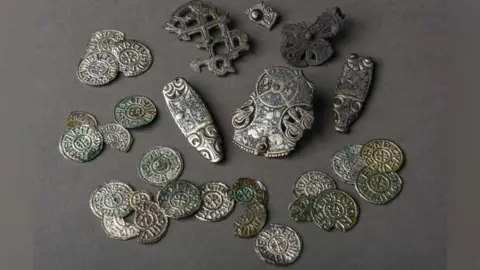 Norfolk Museums Service
Norfolk Museums Service
Find BBC News: East of England on Facebook, Instagram and Twitter. If you have a story suggestion email eastofenglandnews@bbc.co.uk
